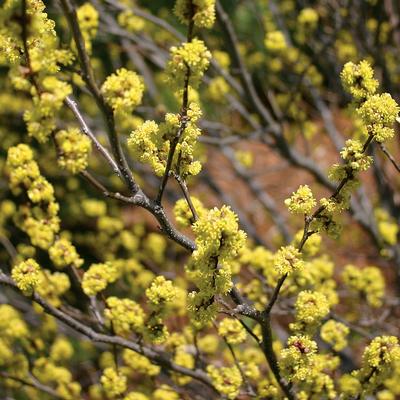Lindera benzoin
Spicebush is so named due to the fragrant essential oils in leaves, twigs, and fruits. Foliage is light green in summer, changing to golden yellow in fall. Clusters of small yellow flowers open in leaf axils before the leaves emerge. The flowers are fragrant and very pretty in a subtle way. Small, egg-shaped, bright scarlet fruits are visible in September.
This deciduous native shrub is a host plant for several species of swallowtail butterflies. Eggs are laid on the foliage. When the larvae hatch, they feed on the foliage before pupating. The flowers attract pollinators, songbirds eat the fruit during fall migration and plants provide nesting sites for a number of animals.
Very good choice for moist soil along stream banks, damp woods, and naturalizing.
- Native, ornamental shrub
- Host plant for swallowtail butterflies
- Great shrub for naturalizing
- Category:
Shrub,
Wetland,
Native
- Hardiness Zone: 4-9
- Height: 6-12 ft
- Spread: 6-12 ft
- Bloom Color:
Yellow
- Foliage Color:
Green
Login for pricing


